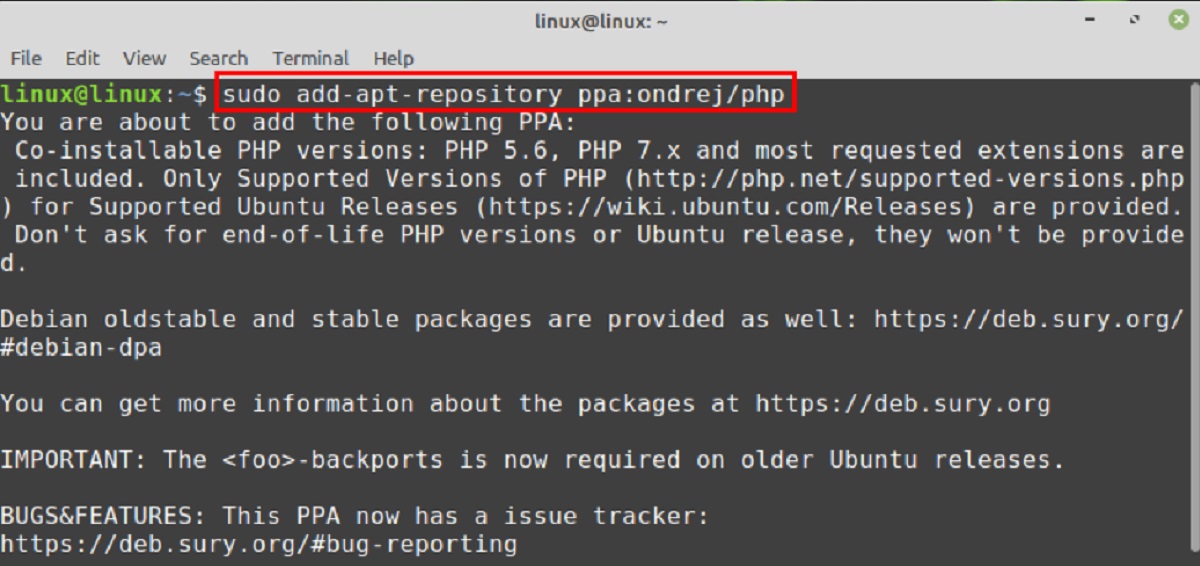Introduction
Welcome to the world of file transfer! Whether you’re a student, professional, or simply someone who wants to easily transfer files from your Fedora server to your workstation, this guide is here to help you. In this article, we’ll explore the step-by-step process of sending files from your Fedora server to your workstation using SSH (Secure Shell) – a secure and efficient method of remote file transfer.
Having the ability to transfer files seamlessly between your server and workstation is essential for productivity and convenience. With SSH, you can securely access your Fedora server through a command-line interface and transfer files back and forth with ease. No need to rely on external storage devices or complicated third-party software.
In this guide, we’ll start by setting up SSH on your Fedora server, ensuring secure access. Next, we’ll show you how to connect to the Fedora server from your workstation, providing you with remote access. Finally, we’ll delve into the process of transferring files from your Fedora server to your workstation, enabling effortless file sharing.
Before we dive into the details, it’s important to note that this guide assumes you have a basic understanding of Linux commands and networking concepts. If you’re new to Linux, don’t worry! We’ll provide explanations and step-by-step instructions to get you up to speed and confidently navigate through the process.
So, whether you’re a developer who needs to transfer project files, a student who wants to access study materials, or a hobbyist who wants to share files between devices, grab your Fedora server and workstation and let’s get started with the exciting world of file transfer!
Setting up SSH on the Fedora Server
Before we can begin transferring files from your Fedora server to your workstation, we need to ensure that SSH is set up and running on the server. SSH allows for secure communication between two computers and enables remote access to your server via the command line.
To get started, follow these steps:
- Open a terminal on your Fedora server.
- Check if SSH is already installed by entering the following command:
- If the output shows that OpenSSH is installed, you can proceed to the next step. If not, install OpenSSH by running the following command:
- Once the installation is complete, start the SSH service by running the following command:
- To ensure that the SSH service starts automatically whenever your Fedora server boots, run the following command:
- By default, SSH listens on port 22. It is a good security practice to change the default port to a different number. Open the SSH configuration file by running the command:
- Locate the line that specifies the port number and change it to your desired port. For example:
- Save the changes and exit the editor.
- Restart the SSH service for the new configuration to take effect:
sudo dnf list installed | grep openssh-serversudo dnf install openssh-serversudo systemctl start sshdsudo systemctl enable sshdsudo nano /etc/ssh/sshd_config# Port 22
Port 12345sudo systemctl restart sshdCongratulations! You have successfully set up SSH on your Fedora server. Now, let’s move on to connecting to the server from your workstation.
Connecting to the Fedora Server from the Workstation
Now that SSH is set up on your Fedora server, it’s time to establish a connection from your workstation. This will allow you to remotely access and manage your server’s files.
Follow these steps to connect to your Fedora server:
- Open a terminal window on your workstation.
- Enter the following command to access your server:
- If this is your first time connecting to the server, you will see a warning about the authenticity of the host. Type “yes” to continue connecting.
- Next, enter your Fedora server password when prompted. Note that you won’t see the password characters as you type, but rest assured, they are being recorded.
ssh [username]@[server IP address]Note: Replace [username] with your Fedora server username and [server IP address] with the IP address of your Fedora server. For example:
ssh john@192.168.0.100Once you’ve successfully entered your password, you will be connected to your Fedora server via SSH from your workstation. You can now execute commands and manage your server’s files directly.
It’s worth mentioning that if you want to simplify future SSH connections, you can create an SSH key pair on your workstation and add the public key to your Fedora server’s authorized keys. This will allow you to connect without entering a password each time.
With the SSH connection established, let’s move on to the exciting part: transferring files from your Fedora server to your workstation.
Transferring Files from the Fedora Server to the Workstation
Now that we have set up SSH and established a connection to your Fedora server from your workstation, we can proceed with transferring files. Using the secure and efficient SCP (Secure Copy) command, we can easily copy files from the server to our local workstation.
Here’s how you can transfer files from your Fedora server to your workstation:
- Open a terminal on your workstation.
- Enter the following command to copy a file from your server to your workstation:
- Type “yes” to confirm the server’s fingerprint if prompted.
- Enter your Fedora server password when prompted. Again, note that the password characters won’t be displayed as you type.
- The file transfer will commence, and you’ll see a progress bar indicating the transfer status.
- Once the transfer is complete, you will have successfully copied the file from your Fedora server to your workstation.
scp [username]@[server IP address]:[path to file on the server] [destination on your workstation]Note: Replace [username] with your Fedora server username, [server IP address] with the IP address of your Fedora server, [path to file on the server] with the path to the file you want to transfer, and [destination on your workstation] with the desired location on your workstation where you want to save the file. For example:
scp john@192.168.0.100:/home/john/example.txt /home/user/DocumentsSimilarly, you can use the same SCP command to transfer multiple files or entire directories from your server to your workstation. Simply specify the appropriate paths for the source and destination.
With this method, you can effortlessly transfer files from your Fedora server to your workstation securely. The SCP command handles the encryption and ensures the integrity of your files during the transfer.
Now that you know how to transfer files, you can easily move important documents, project files, or any other files you need from your Fedora server to your workstation.
With that, you have successfully completed the file transfer process. Congratulations on setting up SSH, establishing the connection, and transferring files from your Fedora server to your workstation!
Conclusion
Congratulations! You’ve reached the end of this guide on transferring files from your Fedora server to your workstation. By setting up SSH, establishing a connection, and using the SCP command, you can now easily transfer files between these two devices with security and efficiency.
We started by ensuring SSH was properly set up on your Fedora server. Through the installation and configuration of OpenSSH, you can securely access your server remotely. We then moved on to connecting to the Fedora server from your workstation, allowing you to manage files and execute commands seamlessly.
With the SSH connection established, we explored how to transfer files using the SCP command. SCP provides a simple and secure method to copy files from your server to your workstation. Whether you need to transfer individual files, multiple files, or even entire directories, SCP can handle it all.
Now, you can easily transfer important documents, project files, and any other files you require without relying on external storage devices or complex third-party solutions.
Remember, you can further enhance your file transfer experience by creating an SSH key pair to authenticate without entering a password each time.
With the knowledge and skills gained from this guide, you have the power to efficiently manage and transfer files between your Fedora server and workstation. Enjoy the convenience and productivity that comes with seamless file sharing!
Thank you for following along with this guide. If you have any further questions or need additional assistance, don’t hesitate to reach out for further support. Happy file transferring!

























